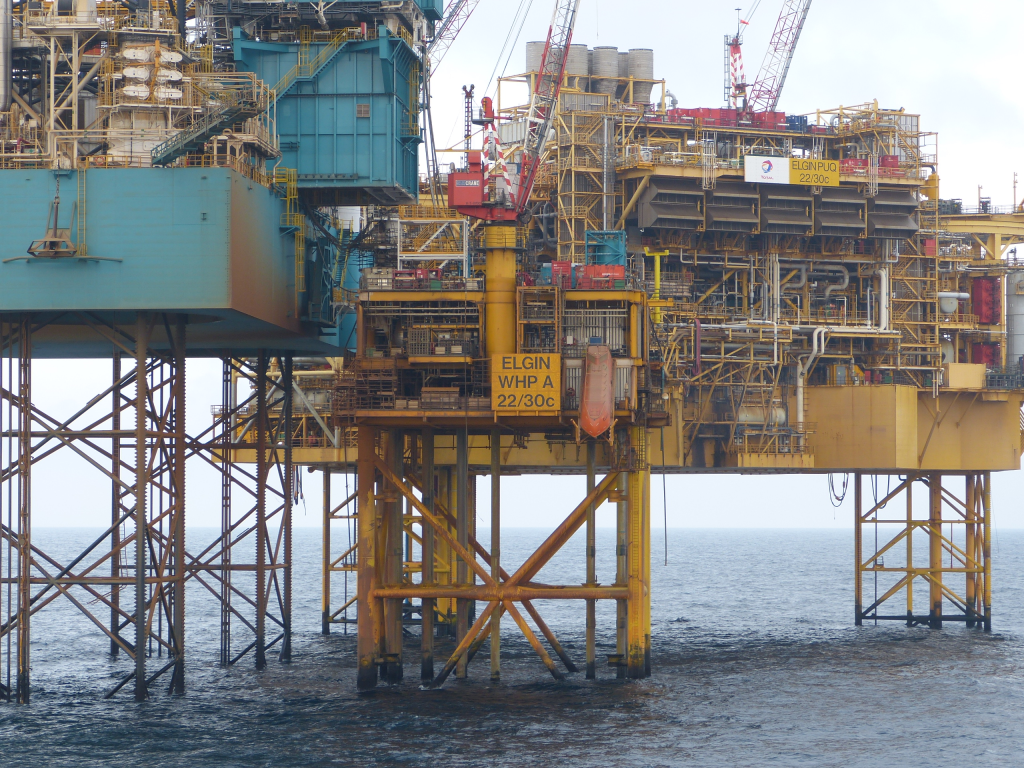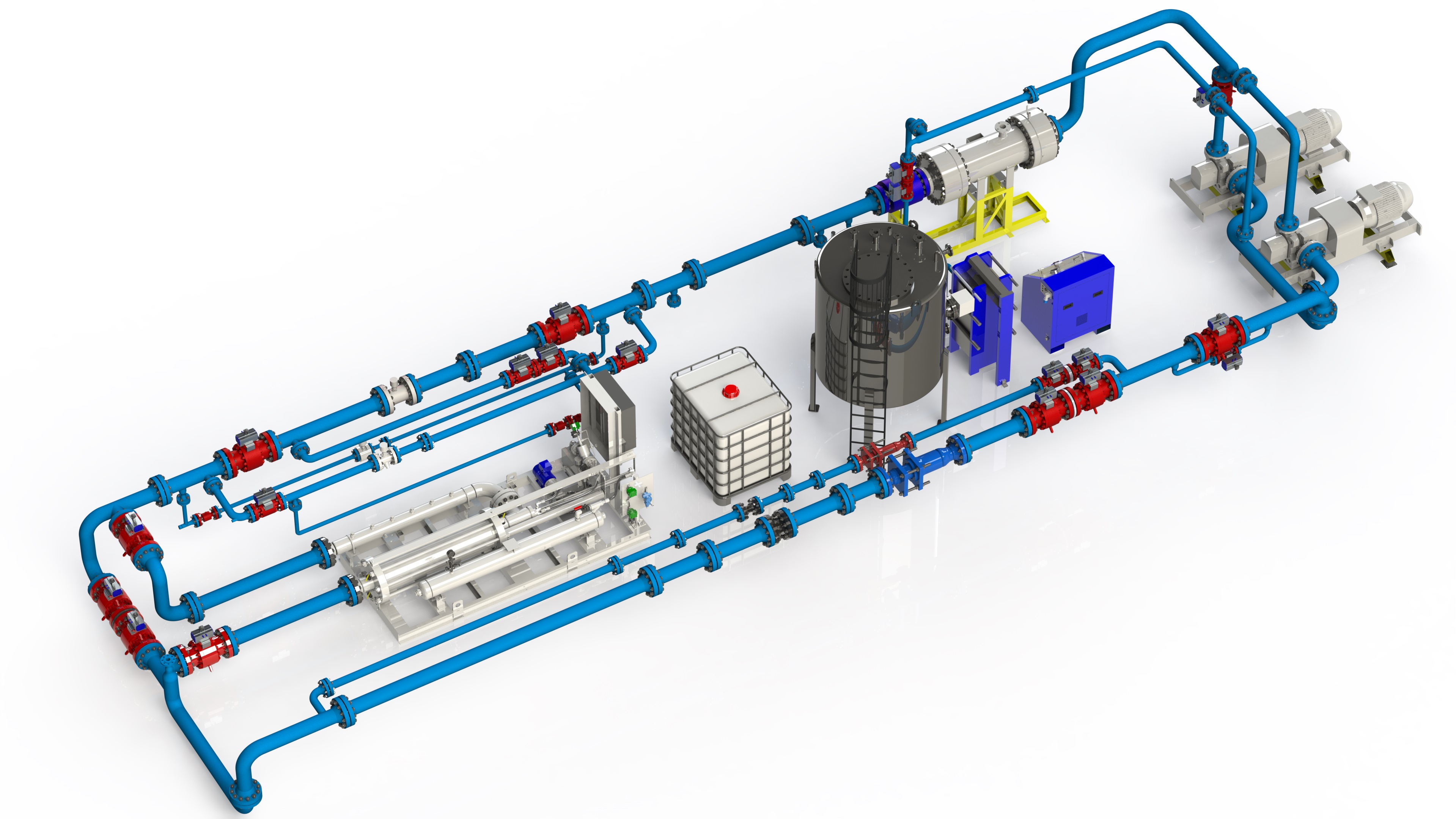As drilling and production technology improves to better exploit HP/HT reservoirs, the ability to accurately measure the flow of oil and all the other associated fluids at these elevated temperatures and pressures also must improve.
One immediate challenge that has arisen is the fact that the temperature and pressure of oil and liquids produced from a reservoir such as this might differ considerably from standard calibration laboratory conditions. Nevertheless, to date, standard practice for calibrating flowmeters in the offshore industry has been to attempt to match fluid viscosity followed, if possible, by the fluid temperature and pressure.
Matching all parameters has seldom been possible due principally to limitations set by the existing calibration facilities. Limitations such as flow-rate range, temperature range, pressure range and even the calibration fluid physical properties mean that few laboratories can meet all customer requirements. Historically, in fact, the parameters that have most often been matched are the flow rate and fluid viscosity.

Total’s Elgin process, utility and quarter platform and the bridgelinked Elgin wellhead platform (with the Rowan Viking drilling rig, left, alongside), along with the linked Franklin platform, currently represents the world’s largest offshore HP/HT project since coming onstream in 2001. The West Franklin reservoir is the world’s hottest, highest pressure reservoir, with a temperature of 197 C (387 F) and a pressure of 16,752 psi. (Source: Total)
Limitation
A limitation of this approach is that temperature and pressure variations are known to have a potentially substantial effect on the measurement performance of certain flowmeter technologies.
Moreover, different technologies exhibit diverse sensitivities to temperature and pressure, all of which might be critical to the overall determination of the measurement uncertainty. While increased pressure at service conditions compared to calibration conditions might cause one measurement technology to undermeasure the flow rate, another technology might overmeasure it. There also have been results that show that manufacturer-specific flowmeters of the same technology can exhibit completely different responses to temperature and pressure variations.
One flowmeter technology that NEL has researched based on the effects of temperature, pressure and viscosity is the Coriolis flowmeter. These are increasingly being used for precision flow measurement. Manufacturers of these devices already state that their flowmeters have compensation built into the flow computer of the device to allow for the effects of temperature and pressure.
However, a lot more work is required due to limited published low-measurement uncertainty data. Other flow measurement technology manufacturers publish compensation factors, which are claimed to be robust and reliable, yet when specific performance claims are made without significant, independent and verifiable data, confusion might understandably arise.

Regulation requirements
In Issue 9.2 of the Guidance Notes for Petroleum Measurement under the Petroleum (Production) Regulations2015, the UK Oil & Gas Authority (OGA) has stipulated that temperature and pressure compensation applied to any flowmeter between its calibration conditions and its operating conditions shall be “agreed in advance with OGA” and also “traceable and auditable.”
These requirements represent a significant administrative move toward ensuring that metering performance is matched to the conditions under which the installed flowmeters operate, thereby minimizing the possibility of errors due to potential mismatch.
With regard to global regulation requirements, there appears to be a current lack of awareness of the substantial mismeasurements that calibrating at alternative fluid temperature and pressure conditions can potentially cause. While there are not yet detailed requirements for traceable “temperature and pressure compensation” in other oil and gas-producing regions, this is partly due to a lack of awareness of the potential consequences. This is a result of there being little traceable independent research publicly available highlighting this key issue.
Meeting the challenge
Importantly, while there has been some research into the performance of flowmeters at HP/HT, only a small amount of independent and traceable data exist.
Furthermore, the independent data that are publicly available only document the performance of certain meter types and sizes. Meter size is believed to be a key factor in the performance of Coriolis flowmeters at altering temperatures and pressures. Because of this, it is not possible to extrapolate the performance of flowmeters and flowmeter types due to the limited datasets and subsequently claim a performance for the device at different conditions.
As the custodian of the U.K.’s National Flow Measurement Standard, NEL is currently commissioning an HP/HT liquid flow facility. It has been specifically designed to facilitate the performance of flowmeters at elevated pressures and temperatures, thereby bringing standard commercial calibrations much closer to actual service conditions. The facility will be able to calibrate flowmeters for the industry at fluid temperatures from ambient up to 82 C (180 F) and fluid pressures from 58 psig to 1,450 psig. Flow rates from 0.36 cu. m/hr (12.71 cf/hr) to 360 cu. m/hr (12,713 cf/hr) means that a large selection of flowmeter sizes will be able to be calibrated at service conditions.
Research plans
Future planned research enabled by the HP/HT test rig, which is supported by fully traceable reference instrumentation, will provide a platform to create significant datasets that were previously difficult to source. This will lead to a better understanding of how temperature and pressure affect measurement uncertainty, as seen by many of the widely used flow measurement technologies in use currently.
The most suitable flow measurement technologies for HP/HT might well be those firmly established techniques such as Coriolis, ultrasonic, turbine or positive displacement devices. But only independent traceable low-measurement uncertainty research can confirm whether or not this is the case. Likewise, it might be possible that conventional liquid flowmeters cannot simply transfer their performance from low-temperature and/or low-pressure conditions to HP/HT service without suitable consideration, characterization or possibly modification.
Design differences
Furthermore, the performance of devices of the same technology (i.e., Coriolis or ultrasonic flowmeters) might not necessarily be similar to one another due to the many and varied differences between designs. Flowmeter material, sizing effects and internal corrections all need to be taken into account.
The answers to all these questions require planned, comprehensive and thorough broad-spectrum research. In the future it might even be possible to assure OGA and other global oil and gas regulators that a return to calibration under ambient conditions will be possible.
But this will require a lot of further research for pressure and temperature effects to be better understood and suitable correction strategies to be developed.
Recommended Reading
Exxon Seeks Permit for its Eighth Oil, Gas Project in Guyana as Output Rises
2025-02-12 - A consortium led by Exxon Mobil has requested environmental permits from Guyana for its eighth project, the first that will generate gas not linked to oil production.
Exxon Enlists Baker Hughes to Support Uaru, Whiptail Offshore Guyana
2025-02-03 - Baker Hughes’ will provide specialty chemicals and related services in support of the Uaru and Whiptail projects in the Stabroek Block.
E&P Highlights: March 17, 2025
2025-03-17 - Here’s a roundup of the latest E&P headlines, from Shell’s divestment to refocus its Nigeria strategy to a new sustainability designation for Exxon Mobil’s first FPSO off Guyana.
E&P Highlights: Jan. 27, 2025
2025-01-27 - Here’s a roundup of the latest E&P headlines including new drilling in the eastern Mediterranean and new contracts in Australia.
E&P Highlights: March 10, 2025
2025-03-10 - Here’s a roundup of the latest E&P headlines, from a new discovery by Equinor to several new technology announcements.
Comments
Add new comment
This conversation is moderated according to Hart Energy community rules. Please read the rules before joining the discussion. If you’re experiencing any technical problems, please contact our customer care team.




